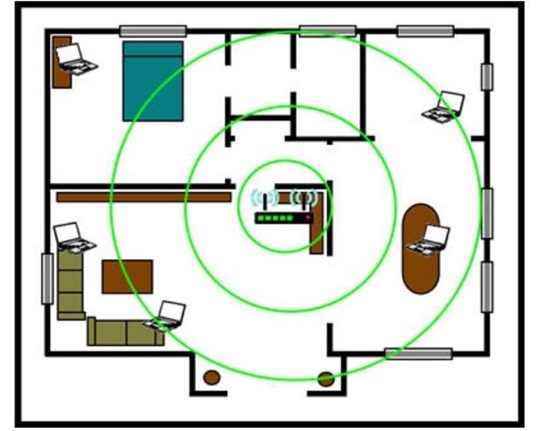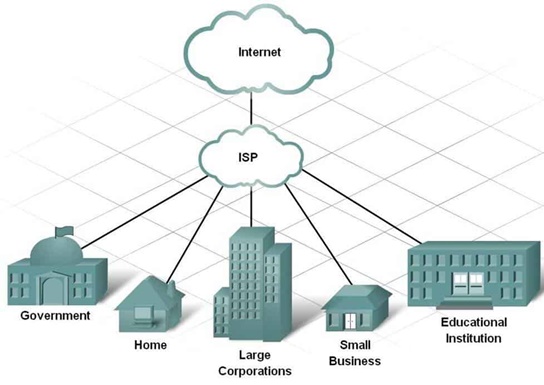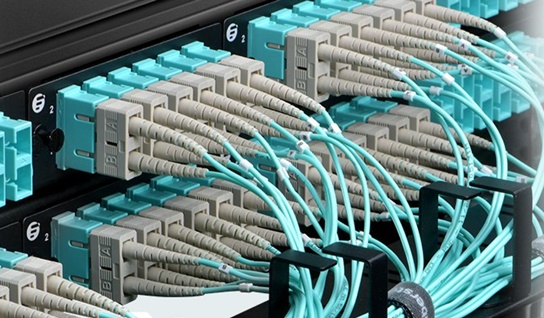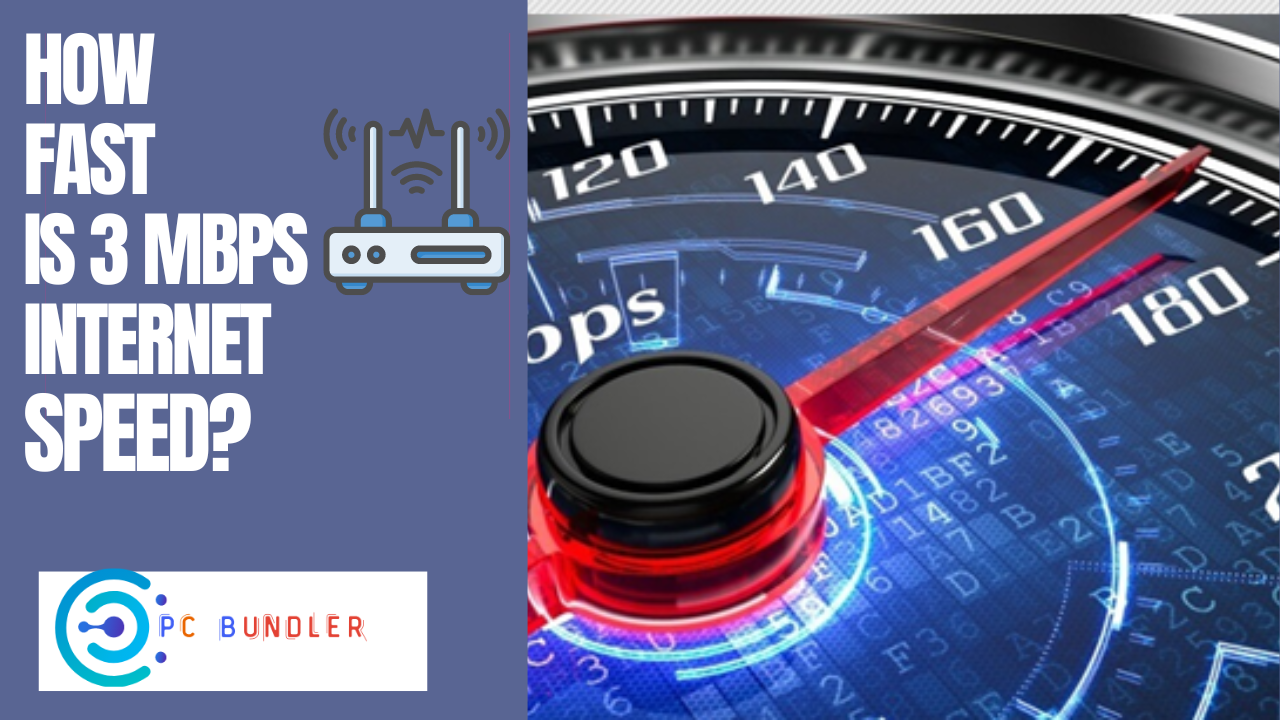Mbps stands for Megabits per second and is a unit of measure for the amount of data that can be transmitted in one second. It is commonly used to describe the speed of a broadband connection.
Today, most people have access to 3 Mbps internet speeds. This is a fairly typical speed for home broadband connections in the USA. However, many people think that this is the standard internet speed and that anything faster is only available through a paid service.
The truth is that many home broadband providers offer 5 Mbps or even 10 Mbps speeds. In some cases, these speeds are available without any additional charge.
How Fast is 3 Mbps Internet Speed?
3 Mbps internet speed is a good option for people who want to surf the web, use social media, and watch videos. It is also a good choice for people who have multiple devices that need to be connected to the internet at the same time. 3 Mbps is also a good choice for people who want to have a fast internet connection without spending a lot of money.
Factors Affecting Internet Speed
There are many factors that can affect your internet speed. The distance between you and the server, the quality of your internet connection, and the number of people using the network at the same time are all factors that can influence how quickly you can access the internet.
1. Location
There are many factors that affect internet speed. One of those factors is the location of the person using the internet. Some people may think that the location doesn’t affect the speed, but in reality, it does. For example, if someone is located in a rural area, their speed will be slower than if they were located in a city.

The reason for this is because there are more people using the internet in cities, which means that the networks are busier and have more traffic. This causes the speed to be slower for those located in rural areas.
Another factor that affects the internet speed is how far someone is from the tower. If someone is located far away from a tower, their speed will be slower than someone who is located close to a tower.
2. Hardware
It is no secret that hardware affects internet speed. The type of hardware you use, as well as the quality, can have a significant impact on how quickly you can surf the web or download files. In general, the better the quality of your hardware, the faster your internet will be.
There are a few things you can do to improve your hardware and increase your internet speed.
- Make sure you are using quality cables and connectors.
- Cheap cables and connectors can degrade your signal and reduce your internet speed.
- Also, be sure to use a good quality modem and router.
- Modems and routers with better antennas will typically provide faster speeds than those with less powerful antennas.
- If you are using a laptop, consider using an external mouse and keyboard instead of relying on the laptop’s built-in components.
3. Software
There is no doubt that software affects internet speed. However, there is some debate as to how much it really matters. Some people say that the type of software you are using does not affect your speed at all. Others say that only certain types of software can slow you down.
The truth is that it depends on the program and your computer’s specifications. For example, if you are using a basic word processing program, it will not affect your speed as much as if you are using a more complex program like Photoshop.
Additionally, if you have a powerful computer with lots of RAM, then you will be able to use more complex software without experiencing any slowdown. However, if you have an older or less powerful computer, then you may notice a difference in speed when using more complex programs.
4. Connection
The connection has a great impact on internet speed. The faster the connection, the faster the internet speed. There are many factors that affect connection, such as internet service providers, types of cables and routers used, and distance from the service provider’s office.
Connection speed is especially important for businesses that rely on the internet for their operations. For example, a business that uses VoIP (Voice over Internet Protocol) for their phone system will need a high-speed connection in order to have good call quality.
There are several ways to improve your connection speed. One is to use a wired Ethernet connection instead of Wi-Fi. Another is to upgrade your router and use a better quality cable modem. You can also try using a different service provider.
No matter how you improve your connection, it is always important to test your speed regularly.
5. Traffic
Traffic congestion on the internet can lead to slow speeds for users. This happens when there are too many people trying to use the same network at the same time. ISPs often throttle or slow down traffic during peak hours in order to make sure that everyone has a good experience.
There are ways to avoid this, however. By using a VPN, you can connect to a server that is located in a different part of the world. This will help you get around any traffic congestion and improve your speeds.
6. ISP
There are many factors that can affect your internet speed. But, is ISP the biggest one?
Netizens seem to think so. In a survey of over 1,000 people, nearly half of respondents said that their ISP was the biggest factor affecting their internet speed. That’s more than twice as many as those who said their computer’s hardware was the biggest factor.

ISP is a big factor for many people, but it’s not the only one. Other factors include your location, the time of day, and even how crowded the websites you’re visiting are. Still, ISP is an important one to consider if you’re looking for ways to improve your internet speed.
Comparison of Different Broadband Speeds With 3 Mbps Internet Speed
There are many types of broadband available to consumers. DSL, cable, and fiber optic are the most common. Satellite and wireless are also options, but may have limited availability in rural areas.
1. 5G vs 3 Mbps
The fifth generation of wireless technology, 5G, is being developed as we speak. The goal is to have a network that can handle a massive number of devices and provide incredibly high speeds. But how does 5G compare to the current standard, 3 Mbps?
One of the main advantages of 5G is its low latency. This means that there will be less delay between when you send a request and when you receive a response. This is important for applications like virtual reality and augmented reality, which needs to respond quickly in order to create a realistic experience. 3 Mbps simply can’t compete with 5G in this regard.
Another advantage of 5G is its bandwidth. It will be able to handle significantly more data than 3 Mbps, making it perfect for applications like streaming 4K video or playing online games.
2. LTE vs 3 Mbps
Though LTE networks are typically much faster than 3G networks, there are still some cases where 3 Mbps is faster. For example, when there is a lot of network congestion, LTE can’t always handle the load as well as 3 Mbps. Additionally, in rural areas where there is not a lot of LTE coverage, 3 Mbps may be the best option.
3. 4G vs 3 Mbps
4G LTE networks are up to 10 times faster than 3G networks, making them the perfect choice for streaming music and videos, browsing the web, and playing games. In fact, a recent study by OpenSignal found that 4G LTE users access twice as much data as 3G users. If you’re still using a 3G network, it’s time to upgrade to 4G LTE.
4. Satellite vs 3 Mbps
Satellite internet offers speeds that are typically much faster than 3 Mbps. In some cases, satellites can offer speeds of up to 25 Mbps. This makes it a great choice for those who need a fast connection. However, satellite does come with some drawbacks. One of these drawbacks is its price tag; satellite is generally more expensive than 3 Mbps.
Additionally, because it relies on satellites to provide its service, satellites can be affected by weather conditions. If there is significant rain or snow in your area, your satellite connection may be disrupted.
5. Fiber vs 3 Mbps
There has been a lot of talk about fiber optic internet service lately. Some people swear by its capabilities, while others find it to be overrated. So, what’s the truth? Is fiber really that much better than traditional broadband service?

In order to answer that question, it’s important to first understand the difference between fiber and 3 Mbps. Fiber optic services offer speeds of up to 1 Gbps, which is significantly faster than traditional broadband services. 3 Mbps, on the other hand, only offers speeds of up to 3 Mbps.
That being said, there are some cases where 3 Mbps may be more than enough for your needs. If you only use the internet for basic activities such as checking email and browsing the web, then you may not need anything more than 3 Mbps.
6. DSL vs 3 Mbps
When it comes to internet speeds, cable always trumps DSL. Cable providers typically offer speeds of 10 Mbps or more, while DSL providers offer speeds of 3 Mbps or less. This is due to the fact that cable uses a dedicated line, while DSL shares a line with other users.
However, there are some cases where DSL can actually be faster than cable. This is usually the case when there are a lot of people using the cable network at once. This is because cable networks have a finite amount of bandwidth, which can be quickly used up when there are a lot of users. DSL networks, on the other hand, have more bandwidth since they use phone lines.
Is 3 Mbps Enough For Gaming And Streaming?
It depends on the type of gaming or streaming you will be doing, and your internet service plan’s download speeds. Generally, 3 Mbps should be enough for casual gaming and streaming, but if you are looking to do more intensive activities such as online gaming or 4K streaming With 60 Mbps, you may need faster speeds.

3 Mbps is the recommended speed for standard definition video streaming. However, if you are trying to stream in HD or 4K, then you will need a higher speed. When it comes to gaming, 3 Mbps should be enough for most online games.
However, if you are trying to play a game that has high-resolution graphics or requires a lot of bandwidth, then you may need a higher speed.
Overall, 3 Mbps is generally enough for both gaming and streaming. However, if you require more bandwidth for one activity or another, then it is best to upgrade your speed.
Conclusion
In conclusion, 3 Mbps is a good internet speed for basic activities like web browsing, emailing, and streaming video. However, if you are looking for a faster speed for more demanding activities, then you may need to upgrade to a higher-tier plan. To find the best internet service for your needs, be sure to compare providers and plans in your area.
It’s perfect for streaming standard definition video content, browsing the web, and checking email. If you’re looking for an internet plan that offers more than just basic web browsing and email, you may want to consider a plan with a higher Mbps speed.

